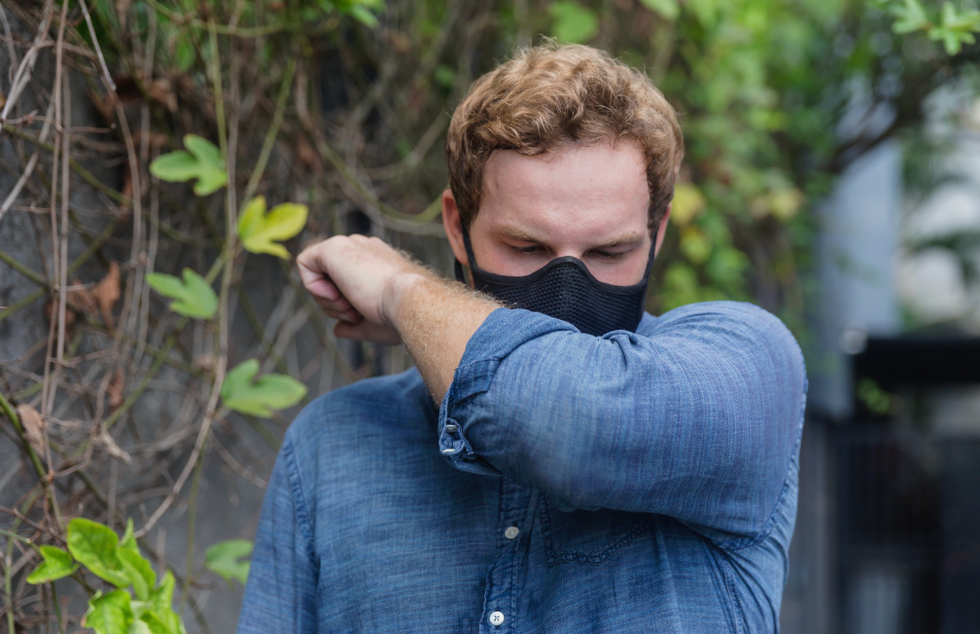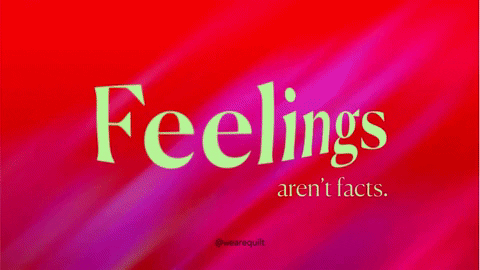The conference industry was one of the first to feel the effects of the coronavirus-driven lockdowns. From March onward, virtually every large public gathering was canceled or postponed, from major events like SXSW and Comic-Con to the thousands of trade, academic, association, and hobbyist meetings that represent the long tail of the multi-billion dollar events industry.
No one knows what will happen when these conferences are allowed to resume. How much of the original event plans are still viable? How many attendees will actually show up? What sort of precautionary measures will be required by new health and safety regulations? And what happens if there's another surge of infections? If a cluster is traced to a specific event, the fallout could be ruinous.
Interested to learn more about what might happen in the near future—especially as a semi-frequent conference-goer myself—I sought out several industry professionals to find out what they are seeing and hearing these days. Not to put too fine a point on it, all agree things are very bad. "Ask anyone who works in this industry," says Dallas-based meeting planner Nann Philips, who runs Scurry Street Meeting Management, "and they'll tell you it's pretty dismal right now."
Planning Around a Pandemic
Because most conferences are planned years in advance, the current disruptions threaten the financial future of subsequent meetings. Exigencies and contingencies are key to event planning, but few contracts anticipated a global health crisis, so it hasn't always been clear who has to take the hit. In the early days of the shutdowns, hotels and venues were more willing to let conference organizers out of their agreements. With some states and cities preparing to open back up, that is quickly changing. Meanwhile, exhibitors and attendees are demanding refunds.
Currently, there is a cautious optimism that some events will be able to go forward in the fall, perhaps even as early as September. But it's clear that when they do return, things won't be the same. "We're not going back to normal," says Philips. "The normal we had is gone."
In response, various industry groups have come together to chart a path forward. On May 8, the Events Industry Council, a coalition of stakeholder companies, announced the formation of a task force "focused on developing standards to ensure the safety and wellness of attendees" to restore confidence in large public meetings.
In the nation's gala-happy capital, the DC Events Coalition was formed in early March to help local businesses do the same. Philip Dufour, an events producer who leads Dufour Collaborative and helped to establish the coalition, says they've had conference calls of up to 750 to discuss shared issues. "The live events industry was the first to go offline," he says, "and we're trying to prevent being the last one to come back online."
Virtual Mundanity
Speaking of online: if you want to stage a conference right now, your only option is taking it virtual, and many have gone this route. From big names like TED to industry-specific events and annual shareholder meetings, many companies and organizations have begun experimenting with the format. In June, Apple's enormous developer's conference, WWDC, will be staged for the first time as an online-only experience.
Industry groups and tech companies are stepping up to help as well. PCMA, an association of business event professionals, recently launched a "digital event fast track" course for conference planners. LinkedIn just announced a set of tools called LinkedIn Virtual Events. And of course, few companies have enjoyed as meteoric a rise in recent months as the now-ubiquitous Zoom.
Dufour has already helped one client pivot an exclusive 250-person live event to a virtual one, and on just three weeks' notice. The only people who remained on-site were technical staff and the executive in charge of the control room. Dufour says the event was successful, and most attendees were present all three days. While his clients would not have considered a remote event in the past, now they have seen it work, and he expects to do it again. "We now think for this kind of group there will be a need" for virtual event planning, he says.
It's possible that some live events may work as well or better in a virtual setting as in a live one. The more content-focused or educational the event is, such as staff training, the better it will translate. Participants in a remote workshop may find an easier time concentrating than in a crowded room. Anything where people traveled out of obligation rather than an express need, especially for meetings of just a few hours, now has a good excuse for taking the whole thing online. Many board meetings already operate with one or more participants not physically present, and making it all-remote would put everyone on the same footing.
Even if the event overall works better live, certain aspects of the experience might be improved. It's certainly more time- and cost-efficient. The ROI on attending or exhibiting at a conference can vary widely. Even if the upside is lower for attending a virtual meeting, so is the downside. (Less expensive tickets may not be as good for the events themselves, however.) Over the course of a year, a company could send more people to more conferences virtually than they could in-person. What's more, they'll be guaranteed a better seat. Says Dufour, "ironically, everyone on Zoom gets an upfront look at the speaker instead of [being in] the back of the room."
But skepticism of these events is easily articulated. Instead of being in Las Vegas or Miami for a weekend, you are still in your cramped apartment, and there are still dishes to be done. Can you be sure your event isn't just a gussied up webinar? As Philips puts it, while live events are "all-five senses," with digital, "you get two senses, at best." And the lack of immersion can lead to boredom. Brad Fishman, chief executive of Fishman PR, which organizes conferences for its franchise clients, says, "People don't have the attention span to sit there for six hours."
The ROI of YOLO
Exhibitors and salespeople are also unlikely to be happy with an all-virtual conference. Networking, socializing, and serendipity are all but lost. Breakfasts and happy hours, where deals often get made, are non-existent. As Fishman puts it, "No one's going to sell a product or a service if they can't be in front of someone." In theory, conference software could make it possible to see who else is attending a session and allow for a virtual tap on the shoulder, but it's still a kludge. Exhibitors show up to find customers they don't already know, and finding them at a virtual conference is unfamiliar territory.
Moreover, events entirely dependent on being in person, such as product launches and auto shows, cannot be duplicated in a virtual environment. The incentive meeting, where you might take your sales team to the Caribbean as a reward, is likewise impossible. SXSW Interactive, while ostensibly a trade show, draws such large crowds because of the local music and nightclub scene, not to mention the breakfast tacos. Making one yourself to eat during a Zoom call can't compare.
And so everyone agrees that live events are not going away entirely. Dufour says, "I think when we're all on the other side, people are going to crave personal interaction again. This is never going to permanently become virtual." But when the new normal begins to establish itself, pretty much every aspect of conferences will have to be reconsidered, from food to seating plans to what kind of sessions are even possible. Local health officials will have to issue new rules in the coming months, but it's really what conference-goers are willing to go along with that will be even more impactful.
The Last Days of Swag
On the lower impact end of the spectrum, badges might be mailed out, rather than picked up in person. Swag is going away, though it was already under pressure for environmental concerns, and buffets are a total goner.
On the higher impact end of things, general sessions with a thousand or more people crammed in to see a celebrity keynote speaker, long a staple of large conferences, will become a thing of the past. At smaller events and in breakout rooms, social distancing requirements will limit the number who can attend. "If you have an event of 500," Dufour predicts, "now you'll need to hold it in a venue that holds two or three times that." Hosting smaller crowds in larger event spaces raises the cost for organizers, and events with thinner operating margins might cease to be economically viable.
But it's also possible that the technology and logistics developed during our (hopefully brief) virtual era can create new opportunities, and offset costs, by allowing for a hybrid approach.
Philips predicts that hybrid events could become the "biggest segment of the industry over the next five years." She suggests that 60% to 70% of live events will have some kind of digital component to involve absent attendees. Fishman agrees that hybrid conferences will become commonplace, at least until a vaccine is discovered. "For people who are afraid," he says, "it gives them the opportunity to attend."
Those who choose not to attend for health and safety reasons may still be able to participate from afar. Dufour sketches out a hypothetical gala: "Let's say you have 100 people who won't [attend in-person] but are still supportive, let's give them a way to participate. Let them log on and watch—can we send them a catered package to allow them to have a similar meal?"
He also suggests a "wagon wheel" approach, where instead of one large event, there are several smaller, probably regional events, lowering the risk to attendees. Each of these meetings could then sync up to hear the same speakers. While live attendance is all but certain to drop in the coming years, new technologies and techniques could bring more people into the fold.
But there are reasons to be cautious about the hybrid approach as well. Hybrid conferences will certainly accommodate those who wouldn't participate otherwise, but they also provide incentives not to show up at all. And the reason to have a conference in the first place is to bring people together for learning, networking, marketing and sales. For an attendee or an exhibitor, every person who chooses not to attend is someone you can't speak with in the hallway, or meet up with later for a drink.
An Uncertain Path Forward
If the live experience is less engaging, it could lead to a vicious circle where fewer people show up. Lower attendance one year could mean an exhibitor brings fewer employees to staff their booth, which could hurt foot traffic, and lead the organizers to choose smaller venues, limiting attendance. Meanwhile, a conference might seem important to a company's business, but if they skip a year and it doesn't affect their bottom line, they might realize they don't need to go at all. Not all meetings will make it to the other side. Some might downsize to become virtual, and not by choice.
At what point does the human desire to be around other people outweigh the fear of illness? A vaccine might restore the old order, but it wouldn't happen overnight. Once proven effective, widespread availability is a major challenge, and confidence that others have had their shots is another. The balance between the benefits of social activity vs. the drawbacks of exposure are being debated in many industries right now. For those whose business depends on live events, the big question is a matter of existential concern: if you build it, will they come?
William Beutler is a writer and entrepreneur based in Washington, DC. He is the CEO of Beutler Ink, and he looks forward to visiting Austin again, someday.















 You cannot be too careful when trying to prevent the spread of the flu.Photo credit: Canva
You cannot be too careful when trying to prevent the spread of the flu.Photo credit: Canva
 Big Brain GIF by Jay Sprogell
Big Brain GIF by Jay Sprogell
 Shake It Off Wet Dog GIF by BuzzFeed
Shake It Off Wet Dog GIF by BuzzFeed
 Working out with friends also makes exercise more enjoyable (and feel quicker).Photo credit: Canva
Working out with friends also makes exercise more enjoyable (and feel quicker).Photo credit: Canva
 People with Imposter Syndrome can't accept their achievements.
Photo by
People with Imposter Syndrome can't accept their achievements.
Photo by  Emotion Feeling GIF by Quilt
Emotion Feeling GIF by Quilt Psychologist - Free of Charge Creative Commons Notepad 1 image
Psychologist - Free of Charge Creative Commons Notepad 1 image
 Human anatomy model.
Photo by
Human anatomy model.
Photo by 
 Socks warm your feet, but cool your core body temperature.Photo credit: Canva
Socks warm your feet, but cool your core body temperature.Photo credit: Canva
 A new t-shirt could open up more hospital beds for patients.Photo credit: Canva
A new t-shirt could open up more hospital beds for patients.Photo credit: Canva Wearable solutions could be revolutionary.Photo credit: Canva
Wearable solutions could be revolutionary.Photo credit: Canva Many wearable tech devices could help you monitor your health.Photo credit: Canva
Many wearable tech devices could help you monitor your health.Photo credit: Canva